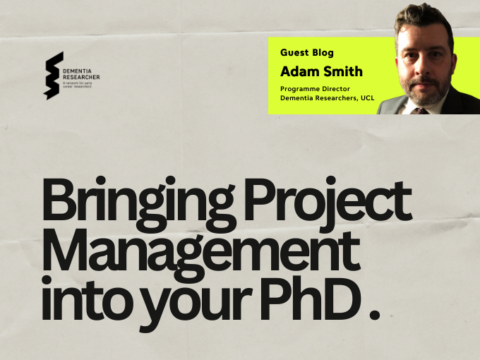As I start writing this blog, I realise that there is a risk that I may wonder off topic, mostly because it’s one that has some related issues. So, I will start by being clear about what I intend to write about. In this blog I am going to talk about how to choose the right journal to publish your research in, but more importantly for beginners – how to identify and avoid predatory publishers.
Let’s start by talking about what predatory publishing is. These journals may seem obvious to some, but even the most experienced researcher can get caught out (particularly as they’re setting increasingly sophisticated traps). The term ‘predatory publishing’ is a bit of a catch-all phrase for what is essentially unethical, unprofessional, and deceptive publishing practices. Whilst there isn’t a single thing that makes one journal predatory there are behaviours which are characteristic. Generally speaking they are those publishers who charge a fee for the publication of material without providing the publication services an author would expect e.g. editing and peer review.
The rise of open access journal publishing has made it even easier for these unscrupulous journals to find authors who are willing to pay for the privilege of publication. At a time when even good journals charge fees to make your manuscript open access (the average is around $3000 to $4000) it can be hard to spot the difference, and tempting to take the ‘cheapest option’.
This leads to the most obvious type of predatory journal, those with a “pay to publish” model. This approach is generally accepted as the most exploitative. Authors are asked to pay a fee to have their work published, without any guarantee that it will be accepted by a reputable journal, or promising to publish in a journal that sounds entirely legitimate but isn’t. Whilst these may be actually be journals (if you can call them that), the issue is that they often lack a rigorous peer review and there are also questions around the quality of the work they publish (which means you may find your very good paper, in bad company). Many of these ‘journals’ are also not linked on reputable sites like PubMed, largely because these sites require a certain number of checks to be carried out prior to indexing. If you are unsure as to whether a journal you are being ‘offered’ is real, check out Bealls list https://beallslist.net/
Other journals get to you with nice emails. ‘Dear Eminent Professor’….’Greetings Of The Day!!!’ and so forth, or invite you to write on a topic that is completely outside your field. What happens when you reply to these kinds of emails? Well, if you submit a manuscript, within days they publish to a website, and send you a bill, making out that it’s too late and you need to pay – the fee can range from a few hundred dollars to a few thousand. Don’t even be tempted to send them anything.
There have been a number of ‘sting’ operations to demonstrate how some of the predatory publishers work, and here are a couple of my favourite examples:
In March 2020, Matan Shelomi actually had a paper published in the American Journal of Biomedical Science & Research, published by Sciencedomain International, claiming that eating the Pokémon Zubat sparked the spread of COVID-19.
In 2020, Bradley Allf, a researcher at North Carolina State University, was invited to submit a paper to the journal US-China Education Reviews A&B, one of many journals run by David Publishing Company. Suspecting the journal was predatory, Allf submitted a nonsense paper espousing the educational benefits of high school students manufacturing drugs in the New Mexico desert, loosely following the plot of the television series Breaking Bad. Two weeks later he got an email to say that the submission had been accepted after a “Rigorous” two-person peer review
So, you get the general idea…..if they approach you via email, and send more and more emails… they’re probably not great and if you suddenly find a journal following you and sending you a DM on Twitter, those are also probably not legitimate (I get lots of these, and they may actually be more like actual scammers than predatory publishers). Having said that some journals do repeatedly ask for guest editors and these are often genuine and the repeated emails are often just because they’re desperate. However, guest editing is a lot of work and a lot of chasing people for papers so it’s up to you if you do it.
Fortunately, there are a number of initiatives that have been put in place to address the issue of predatory publishing. For example, the Directory of Open Access Journals (DOAJ) is a database of open access journals that have been verified by experts to meet certain standards of quality. The DOAJ ensures that authors are able to find journals that are legitimate and of high quality. In addition, organisations such as the Committee on Publication Ethics (COPE) provide guidelines and resources to help authors identify predatory publishers and protect themselves from exploitation.
You can also take a look at Cabell’s Blacklist and ThinkCheckSubmit, they allow authors to check a journal’s credentials to ensure that it is not a predatory publication. Of course… there is also your friendly local librarian, they may not know all the bad ones (as they pop-up every day) but they will know the good ones.
Aside from the unethical practices involved in predatory publishing, there are also several other issues to mention. One of the most pressing concerns is the impact that predatory publishing has on the public perception of science in general. We all know there are a lot of people out there… who like to point at the ‘science’ being published to prove their point, and when a journal is willing to publishing anything you send them, this can have serious repercussions… we all remember that 5G causes COVID-19 right….
Now that you know the good from the bad and the ugly, let’s discuss how to find the best journal to publish your work in. Although before we do, let’s just think about ‘best journal’ for a moment, what makes a journal ‘the best’, is it impact factor? Is it the one which is the most ethical? Is it the one that will actually peer review and publish your work quickly? Or maybe the journal that everyone in your small niche area of research actually reads? Ideally, it would be probably a mixture of all of those things.
Here are some simple things you should consider when finding a journal to publish your work in:
- Identify the most relevant journals appropriate to your research field: Use databases, such as Web of Science, Google Scholar, or Scopus to identify the most relevant journals. You probably already know them, they’ll be the ones you see all the work like your own in, but look anyway and make a short-list, there may be some you missed. There are also some online tools which may be able to help – Edanz editing will allow you to paste your abstract and based on keywords it picks out will suggest some journals for you.
- Understand journal requirements: Gather information about the journal’s scope, publication requirements, and submission guidelines.
- Research journal reputation: Look up the journal’s impact factor, citation rate, and editorial board members to get a better sense of its reputation – you could also talk to your supervisor, or post to social media to ask for people experiences with a particular journal (although be prepared for negative feedback, that’s the kind people are most likely to give).
- Consider journal turnaround time i.e. the time it takes the journal to review and publish articles. You can work this out by looking at the submission date vs the publication date, however, don’t be fooled, these don’t always seem accurate.
- Consider journal cost: Journals may charge a fee for publication. Make sure you understand any associated costs before submitting your paper (now this topic could be a blog all in itself). Speak to your institutions librarian, or look online, as most Universities have open access / gold open access agreements with some journals, so the fees are covered as part of that agreement (If you’re funded by a charity in the UK, like ARUK, they have an arrangement with F1000, the NIHR has similar arrangements, as do ISTAART PIA members – so check with your funder, networks and institution). You may also need to be aware of hidden costs and the ‘bonus’ extras that you’re offered e.g. would you like to add audio for an extra $500.
- Look for open access opportunities: Open access journals provide free access to research and can be a great way to get your work seen by a wider audience. Of course if you really don’t have the money, and you can’t avoid the fees, and that is the best journal, you may not have the open to go open-access. However, you should if you can (your funder may also insist on it).
- Talk people: Yes, it is an obvious one, but go and talk to your librarian, your supervisor, your colleagues and of course your co-authors. They’ll all have opinions, but has the potential create some confusion, however, they should all be able to help with creating that short-list we mentioned back at point one.
I’d love to hear your own top-tips for choosing the right journal, so please do add to the comments.
Author
Adam Smith was born in the north, a long time ago. He wanted to write books, but ended up working in the NHS, and at the Department of Health. He is now Programme Director at University College London (which probably sounds more important than it is – his words). He has led a number of initiatives to improve dementia research (including this website, Join Dementia Research & ENRICH), as well as pursuing his own research interests. In his spare time, he grows vegetables, builds Lego, likes rockets & spends most of his time drinking too much coffee and squeezing technology into his house.

 Print This Post
Print This Post




